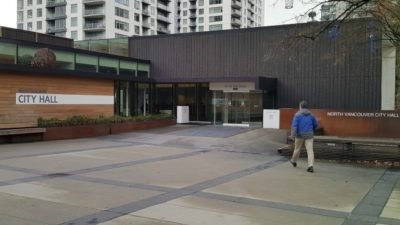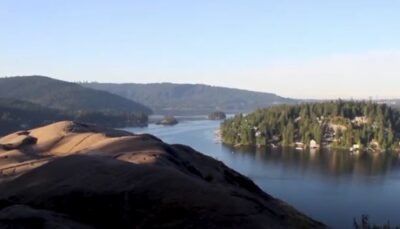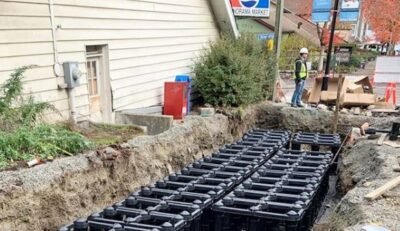Biking has many benefits for bikers. And for others too. For example, reduced emissions
Peter Scholefield
Over the last few years, there has been a significant increase in the number of dedicated bike lanes, most of them marked with white lines on the side of roadways. Increasingly though, there is a trend being promoted by HUB North Shore for physical barriers to separate cyclists from motorists. There has also been an increase in the number of multi-use paths such as the Spirit Trail where cyclists can ride their bikes, free from any automobile traffic.
Cyclists passing through the north end of the Lions Gate bridge in the spring of 2013 and 2016 increased from 278 over 2.5 hours in 2013 to 394 over 2 hours in 2016.
It is not surprising then that there has been a commensurate increase in the number of people cycling. For example, there has been a noticeable increase in the number of cyclists crossing back and forth across the Lions Gate Bridge. The number of cyclists passing through the north end of the Lions Gate bridge during Bike to Work Week in the spring of 2013 and 2016 increased from 278 over 2.5 hours in 2013 to 394 over 2 hours in 2016.
So, it is clear that increasing the number of bike lanes leads to an increased number of people riding bicycles.
This increase in the number of cyclists means fewer people driving cars on our roadways and therefore less traffic congestion. More people cycling also means reduced automobile exhaust emissions. The cardio-vascular and calorie-burning health benefits of cycling are well-known, so getting more people on bicycles means healthier people too. It is not only cyclists who benefit from improved health but the general public due to less air pollution and reduced costs to our health-care system. So, anything that can be done to increase the number of people riding bicycles is good for our public health, our climate and can alleviate traffic congestion. The best way to get more people on bicycles is to make cycling safer by building more bike lanes.
The fear and anxiety associated with the risks of riding a bicycle in automobile traffic is the biggest deterrent to getting more people on bicycles. This past summer in West Vancouver, a cyclist riding westward uphill on the right-hand side of the road between 19th and 20th Streets on Bellevue Avenue was hit from behind by a passing motorist and was seriously injured. This incident was caught on a surveillance camera from an apartment building across the road. The video went viral. It was horrifying to watch. It is incidents like this that make people afraid to take up cycling. Had there been a bike lane on that uphill section of the Bellevue Avenue bike route, which HUB North Shore is now recommending, then this unfortunate incident probably would not have happened and fewer people would have been frightened by the thought of riding a bicycle in traffic.
Many of the designated bike routes on the North Shore are on residential streets where parked cars on either side of the road restrict the space for vehicle traffic. Not only do cyclists riding on these streets have to face the risk of riding with automobile traffic but also the risk of being “doored” by a motorist entering or exiting a parked vehicle or by a vehicle itself moving out into the traffic lane. Removing parking from one side of the road to accommodate bike lanes makes it much safer for cyclists. Furthermore, roadways are public property designed primarily for transportation purposes.
It is much more efficient for our transportation system to have bicycles moving in designated bike lanes occupying public road space instead of stationary parked vehicles. A final argument in favour of building more bike lanes on the North Shore is an aesthetic one. Green paint is becoming an increasingly popular way to make bike lanes more visible and safer, and planter boxes are sometimes used to physically separate bike lanes from traffic. These features make our roadways more visually attractive to travel on.
Peter Scholefield is the Vice-Chair of the North Shore Committee for HUB, a non-profit that works to improve cycling conditions in Metro Vancouver.









Traffic volume on the LGB is about 60 000 – 70 000 vehicles per day. And increasing. The north shore is becoming more and more congested as more and more residents flood in.
Dedicate the whole LGB to cyclists WHEN an alternative route over Burrard inlet is constructed. Cyclists do not rule the roost, they are a minuscule minority who get treated like royalty who own the bridge and have to put up with pesky motorists.
Its ludicrous.